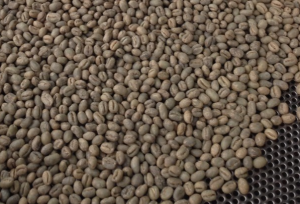High-quality coffee common sense coffee tasting teaching notes
In the coffee tasting process, when we have this uncomfortable feeling, the first reaction is that the caffeine content is too high, so it is bitter and bad. But this is the wrong coffee. Since the coffee training course was set up in our college, it has attracted many students to study. In teaching, I carefully checked the coffee-related materials and found that abnormal work and rest and too much caffeine intake do lead to uncomfortable symptoms such as palpitations. But nausea and sore throat are definitely not side effects of caffeine.
The culprit of this sad phenomenon is actually bad coffee beans. What I have described is that raw coffee beans must go through the process of picking beans, screening and removing defective beans and impurities before they can be sent into baking, and whether the beans are fine and accurate is not only related to the flavor of the coffee, but may also affect health.
I will further support that black beans, fungus beans and moth beans in defective coffee beans may all contain toxins, of which the biggest hidden danger is aflatoxin. This is a secondary metabolite produced by microbacteria and is a natural bacterial toxin. It can be divided into four types: a\ B\ C\ D, among which aflatoxin An is the most toxic. According to the literature report, aflatoxin may cause liver and kidney disease, malformed fetus, immune system disease, and even find cancer in laboratory mice. It is a possible carcinogen to human body and is highly toxic.
At present, coffee beans are mostly imported from abroad, resulting in planting environment, harvesting, processing, packaging and storage. Once the temperature and humidity are not well controlled, they are vulnerable to toxin invasion. Although most of the toxins of raw beans can be reduced by high temperature after baking, they may still remain a little, even though roasted coffee beans may still have a large number of bacteria and eventually be drunk. Fortunately, with the continuous popularization of coffee knowledge, people have higher and higher requirements for coffee, and there are fewer and fewer junk beans. However, there are many very low-cost coffee beans on the domestic market, the ones that cost dozens of yuan a bag, and they are not sure whether they really contain toxins.
Because of the toxin crisis and poor taste, more and more independent cafes emphasize picking beans by hand, eliminating the defective beans that affect the flavor of coffee and people's health. Responsible not only for the tongue, but also for the health of consumers. Everyone can be a little more gatekeeper for their own health and safety, the key is to pick out the coffee beans that have missing corners and feel that they are not beautiful, and the beautiful coffee beans will be delicious and safer when boiled. Although the color of coffee beans becomes darker after roasting, it is difficult to identify mold plaque on the surface, but complete and smooth coffee beans are always safer. Like a wine taster, a coffee cup tester must understand the sensory characteristics of all kinds of coffee and drink it even if there are only two defective beans in a cup of coffee. Of course, not everyone has a good ability to drink a cup of coffee, so we should pay attention to drinking less cheap coffee outside, it is best to buy high-quality coffee, or mature and guaranteed coffee brands.

Important Notice :
前街咖啡 FrontStreet Coffee has moved to new addredd:
FrontStreet Coffee Address: 315,Donghua East Road,GuangZhou
Tel:020 38364473
- Prev

Common sense of Coffee Why doesn't coffee smell good?
For a long time, many friends have the same question: why does coffee smell good, but it doesn't seem to taste so good? The answer is usually answered like this: this answer comes from a research report by Barry Smith, a professor at the University of London in the UK. ① because when we drink coffee, we feel the smell of coffee twice, once by inhaling from the external environment.
- Next

The use of the words cafe, Caffe and Coffee in the study of boutique coffee
Many people don't know how to distinguish and use these words about caf, Caffe and Coffee. Here, Mr. Luo, from the West Point Coffee training School in Brista, popularizes the differences about these coffee words: caf: from French (caf), meaning small restaurant, coffee shop, do not use it instead of coffee in the menu (Spain is also written in the same way, because Spain was colonized by France in the early days.
Related
- Beginners will see the "Coffee pull flower" guide!
- What is the difference between ice blog purified milk and ordinary milk coffee?
- Why is the Philippines the largest producer of crops in Liberia?
- For coffee extraction, should the fine powder be retained?
- How does extracted espresso fill pressed powder? How much strength does it take to press the powder?
- How to make jasmine cold extract coffee? Is the jasmine + latte good?
- Will this little toy really make the coffee taste better? How does Lily Drip affect coffee extraction?
- Will the action of slapping the filter cup also affect coffee extraction?
- What's the difference between powder-to-water ratio and powder-to-liquid ratio?
- What is the Ethiopian local species? What does it have to do with Heirloom native species?

